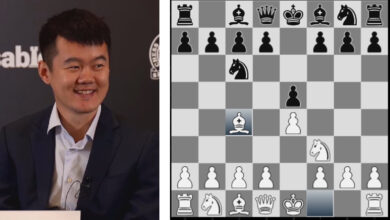Why tired hands have been at the heart of Steve Smith’s run rut? | Cricket News

Australia vs India: Steve Smith was limping in agony and muttering out loudly, “get some good nets for god’s sake here”. He was batting at the nets, a day before the Perth Test, when a cut from Marnus Labsuchagne, batting in the adjoining nets, sneaked through a hole at the bottom of the nets and crashed into Smith’s calf. He carried on for a bit with his muttering when a couple of minutes later Travis Head, who has had multiple lengthy net sessions over the last two days, sauntered over to nudge him, “Hey heard something happened to you?!” Even before Smith could reply, Marnus chipped in, “The ball grazed him lazily, and you know Smudge (Smith’s nickname) …” Smiles all around. That was the kind of space the three men, so crucial to Australia’s batting, were in a day before the game they would lose in four days.
While the Australian media has been shooting darts at Labuschagne, it is Smith, all said and done, who holds the key and this middle-order together. His form dictates Australia’s batting mood. He has fallen twice cheaply in this game. He had opened a few Tests before this and returned to his original spot, from where he had terrorised bowlers all around the world. In Virat Kohli’s words, “he is the best Test batsman of this era”. His game is in a fascinating space now. Smith has averaged 25.55 in Tests this year and 37.38 last year. His eagerness to open in Tests last summer is now being read as a “vanity project” in the Australian media. He wanted to open then, he wanted to go back down to four now.
A batsman who can retreat into the most unusual spaces at the crease, feet pressed together almost unlike almost anybody else, but he possessed that mind-boggling hand-eye coordination to wriggle out of what seemed like trouble. To him it wasn’t. The hands would bring the bat and he would play a perfectly compact defensive push, right in front of his pad.
Those hands are a bit tired these days or not quite in sync. Replay that first-innings dismissal against Jasprit Bumrah on the first evening. It was his first ball, and he had retreated well behind the crease, almost square-on, pads brushing each other, his back facing the stumps – nothing about that position is ideal in the orthodox cricket way, but Smith smudges out orthodoxy. The hands usually effect a jail-break stunningly, leaving an impression of ‘oh yes, that’s the best way to play that ball’ kind of feeling floating in the air. That was the illusion Smith has created over the years.
Buffering movements
Not recently, though. Certainly not at Perth. As Bumrah’s sharp nip-backer snaked in towards his pad, Smith’s hands moved. But unlike the past, this wasn’t coming in at high speed, but akin to the buffering of an internet video in a downtown cafe. He couldn’t get them in place in time to stop the damage.
In the second innings, he initially tried to move towards the line, again not many would do that as convincingly as him. He can be almost floating across, still moving, but can retain an admiringly still(ish) head even during that phase. The bat can move in like a whiplash to send the ball through extra cover or if the mood seized him, he could twirl his wrs to send the ball plummeting through empty spaces on the leg side.
But soon in the second innings, he found himself not quite there yet. The confidence in the hands wasn’t there. He began to stay in the crease, almost getting stuck. On that delivery that took his wicket, a lovely length ball that straightened just outside off from Mohammad Siraj, Smith had pressed his feet together so close, still on that crease, and was up on his toes – as if he were curling his entire body into a tiny space. But the hands betrayed him, pushing out the bat along with it and the ball took a slice of outer edge. Even as he neared the boundary, his mouth remained open in agony for a long while.
The rest of his batting mechanism is there: the twitches and the frenetic movements of a three-year old unable to be still. But the essence of his art was the time he had to play a shot, the main calming act after the storm of freneticism – and that has been missing for a while now.
He could find himself in strange spots within that crease, and could wr a ball that seemed to be heading towards his pad around off and middle stump line to through midwicket. Not an ungainly stab to get out of trouble, but a remarkably fluid whip that would make us, the watchers, throw our heads and laugh at how he did that.
At his pomp, Smith’s batting style is all dares with a bit of utilitarian showmanship. An ordinary leave doesn’t suffice, he has to snap his bat away. A regulation straight drive to a middle-stump ball won’t do; he has to let the ball keep coming in till we jerk up, till the bowler’s eyes almost pop out in anticipation, before he would nonchalantly whoosh it to the leg side. Precise foot movement? Why such abstinence? Indulge, walk, nay roam, about the crease. He is theatrical even when he is not playing a shot. He presented a moving target that regularly dracted the bowlers. Not only the “best batsman of this era” but a true original who did it his way.
Now, that way is being questioned, perhaps age, perhaps lack of confidence, and certainly his hands. When he finds it again, all the fuss about his feet, position at crease, would fade out and the jaws can drop again. But will he, in time to turn around this series for Australia or will Head’s words to him, “heard something happened to you?” take on a different meaning about his game itself?







